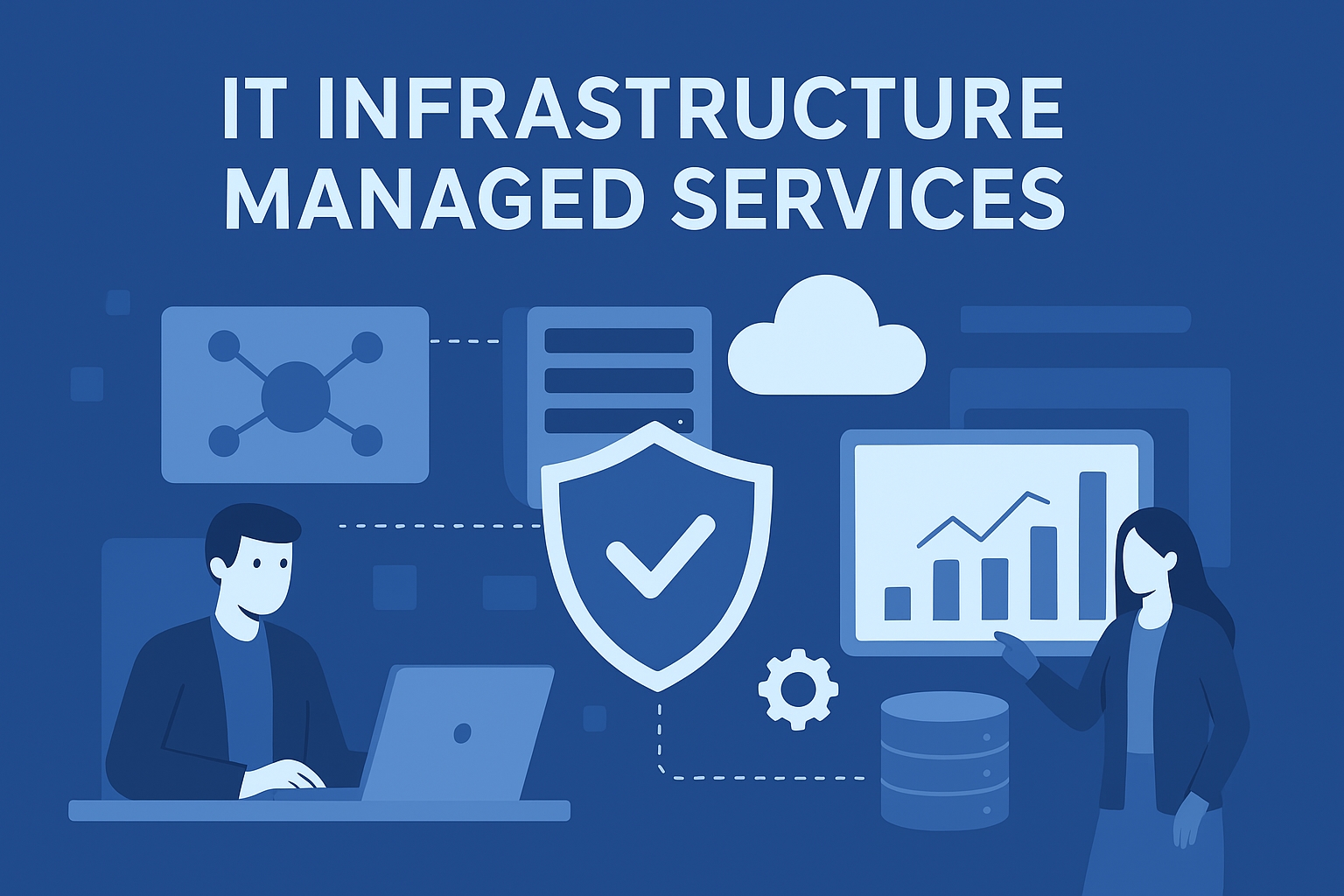In today’s fast-moving corporate world, a reliable, agile IT infrastructure is no longer optional — it’s critical. Companies increasingly depend on systems, networks, and data platforms to stay competitive, and even a short downtime can cost dearly in revenue, trust, and productivity. That’s why many organizations turn to IT infrastructure managed services — to outsource the monitoring, maintenance, and optimization of their technology backbone to experts.
This article breaks down what these services encompass, what benefits they offer, and why they are vital in a digital-first landscape.
What Are IT Infrastructure Managed Services?

IT infrastructure managed services refer to outsourcing the ongoing management, support, and improvement of a company’s core IT systems to a third-party provider (often an MSP). These services typically cover:
Servers and Data Centers (on-premises or hybrid)
Network infrastructure (LAN, WAN, wireless)
Storage systems and data backup
End-user devices (desktops, laptops, mobile)
Cloud platforms and infrastructure
An MSP leverages tools, automation, and domain expertise to keep all this robust, secure, and performing well.
Core Components of IT Infrastructure Managed Services
Here are the main service areas MSPs often provide:
1. Network Monitoring & Management
Monitor traffic, bandwidth, latency, and packet loss in real time
Detect and resolve connectivity or configuration issues
Optimize network devices, routes, and performance settings
2. Server Management
Routine maintenance, patching, and updates
Performance tuning, capacity planning
Rapid response to server failures or disruptions
3. Backup & Disaster Recovery
Automated backups with defined retention policies
Planning, testing, and validating disaster recovery (DR) strategies
Fast recovery of critical systems during emergencies
4. Cloud Infrastructure Management
Manage cloud deployments (IaaS, PaaS), hybrid or fully cloud
Cost optimization, scaling, and resource allocation
Secure access, governance, and compliance in cloud setups
5. IT Help Desk & End-User Support
24/7 support for hardware, software, connectivity issues
Remote troubleshooting and on-site fixes where needed
User training and guidance to reduce repeated problems
Also Read: Managed IT Services for Accounting Firms
Comparing In-House vs Managed IT Infrastructure
Aspect | In-House Infrastructure | Managed IT Infrastructure Services |
|---|---|---|
Cost | High fixed costs for staff, hardware, training | Predictable subscription or service fees |
Expertise | Limited to internal team skills | Access to certified experts across domains |
Scaling | Requires new hiring, new hardware | Flexible scaling to match business growth |
Security | Reactive, limited capacity | Continuous monitoring, robust security posture |
Focus | Maintenance & firefighting | Enables internal teams to focus on strategic work |
Downtime | Slower response due to limited resources | Faster reaction with 24/7 oversight |
Benefits of IT Infrastructure Managed Services
Cost Efficiency
Outsourcing IT infrastructure reduces capital expenditure on hardware, hiring, and training.Improved Security
MSPs deploy firewalls, endpoint protections, vulnerability scans, and continuous monitoring to shield systems.Proactive Monitoring
Issues are detected early—before they escalate into outages.Scalability
Infrastructure can expand or contract based on business demand, without the burden of procurement.Access to Expertise
Businesses tap into experts in networking, cloud, security, and more—without maintaining all that in-house.Focus on Core Business
With IT handled, leadership and teams focus on innovation, products, customers, and growth.
Additional perks often include predictable cost models, handling vendor relationships, and compliance support (e.g. GDPR, HIPAA, PCI DSS).
Industries That Benefit
Healthcare — To manage patient records, secure data, maintain compliance.
Finance — For stringent data security, high availability systems, regulatory obligations.
Retail — To support point-of-sale systems, inventory, customer-facing services.
Manufacturing — To enable IoT, automation, supply chain visibility.
Education — For robust e-learning platforms, student data security, wide network needs.
Challenges Addressed
Complex IT Environments — As systems proliferate, it’s tougher to manage in-house. MSPs centralize oversight.
Rising Cyber Threats — Managed security mitigates risks proactively.
Talent Shortage — Many organizations struggle to find and retain specialized staff. MSPs fill the gap.
Budget Constraints — High upfront costs deter infrastructure investments; MSPs lower the barrier.
Integration Difficulties — When adopting new tech, MSPs smooth out compatibility and migration challenges.
Also Read: https://infodot.co.in/blog/managed-it-services-for-manufacturing/
